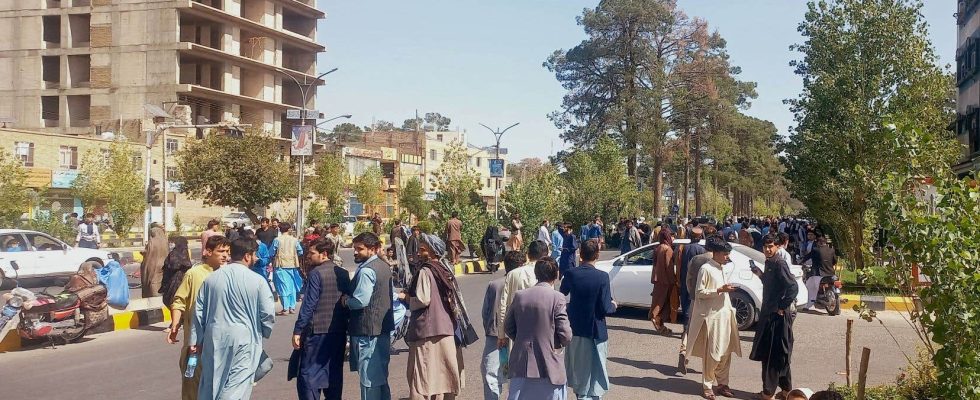A 6.3 magnitude earthquake left 15 dead and dozens injured Saturday morning in western Afghanistan, an initial toll that is expected to worsen as the earthquake caused landslides and victims are still trapped under the rubble, authorities said.
“According to our information, people are still buried under the rubble,” the director of public health in the province of Herat, Mohammad Taleb Shahid, told AFP, recalling that there is still no “ final assessment.
The epicenter of the earthquake was located 40 kilometers northwest of Herat – a city considered the cultural capital of Afghanistan -, and it was quickly followed by four strong aftershocks of magnitudes 5.5, 4, 7, 6.3 and 5.9 respectively, reported the American Institute of Geophysics (USGS).
In a video statement, National Disaster Management Authority spokesperson Mullah Jan Sayeq said “around 40” people were injured in tremors felt in three provinces, in addition to 15 killed.
“These are the preliminary numbers. It is possible that the numbers will increase,” he said. Earlier in the day, he reported landslides in neighboring rural and mountainous areas to AFP.
Herat provincial public health director Mohammad Taleb Shahid put the death toll at 14, with 78 injured, but agreed the tally was likely to rise.
In Herat, which has a population of 1.9 million according to World Bank data, the city’s residents and traders fled buildings when the earthquake struck, around 11:00 a.m. local time seeing a AFP journalist, but for the moment, no reports of victims or material damage had been reported.
According to a preliminary report from the USGS, the earthquake, initially estimated at a magnitude of 6.2, could cause several hundred deaths.
“It is likely that there will be a significant number of casualties and that the disaster will potentially be widespread,” the institute said. “Previous events with the same alert level have required a response at the regional or national level.”
“In rural and mountainous areas, landslides have occurred,” natural disaster management services spokesperson Mullah Jan Sayeq told AFP.
“It was terrifying”
“We were in our offices when the building suddenly started shaking and the wall coverings fell off. The walls cracked, and part of the building collapsed,” Bashir Ahmad, 45, told AFP.
“I can’t contact my family, the network connections no longer work. I’m so anxious and scared, it was terrifying,” he added.
Groups of women and children stood away from tall buildings on the streets of Herat after the earthquake and its aftershocks, which struck over the next hour.
In June 2022, a 5.9 magnitude earthquake, the deadliest in Afghanistan in nearly 25 years, left more than a thousand dead and tens of thousands homeless in the poor province of Paktika.
And last March, a 6.5 magnitude earthquake killed 13 people in Afghanistan and Pakistan, near the town of Jurm, in the northeast of the country.
Afghanistan frequently experiences earthquakes, particularly in the Hindu Kush mountain range, close to where the Eurasian and Indian tectonic plates meet.
The country is already in the grip of a severe humanitarian crisis, since the return to power of the Taliban in 2021 and the subsequent withdrawal of international aid.
